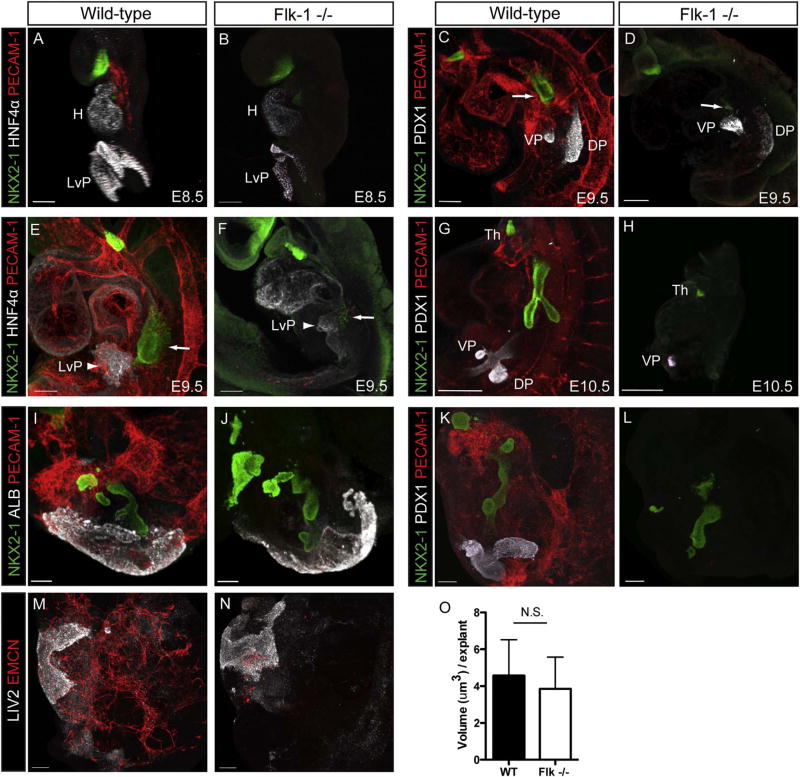Fig. 6.
Cultured E8.5 Flk-1−/− mutant foreguts maintain liver, but not pancreas, progenitors. Immunostaining for HNF4α at E8.5 shows strong expression in the ventral endodermal lip of the anterior intestinal portal (AIP) in both wild-type (A) and Flk-1−/− mutant (B) embryos. HNF4α is also expressed in the heart (H). On E9.5 the liver field (LvP) is clearly demarcated by HNF4α staining (E, F, arrowheads). The size of the field in wild-type embryos (E) is noticeably larger than that of the mutants (F). Respiratory progenitors (arrows) are present in both wild-type and mutant embryos, but their number is greatly reduced in the mutants. After 5 days of culture, explants of wild-type (I, M) and Flk-1−/− mutant (J, N) foreguts show a similar expansion of liver precursors, which are identified by the expression of ALB (I, J) and LIV2 (M, N). Volumetric quantitation of cells expressing ALB in confocal z-stacks shows no statistical difference between wild-type and Flk-1−/− mutant explants (O; p > 0.05, N =11 (wild-type) and 8 (Flk-1−/− mutant)). Immunostaining of E9.5 wild-type embryos (C) for PDX1 shows strong expression in both the ventral (VP) and dorsal (DP) pancreatic rudiments. NKX2-1 staining identifies respiratory progenitors in the lung field (arrow). E9.5 Flk-1−/− mutant embryos stained for PDX1 also show expression in the pancreatic field (D); the number of NKX2-1 respiratory progenitors (arrow) is substantially less than that seen in wild-type embryos. Note that PDX1 expression in the mutant VP is equivalent to that seen in wild-type embryos, while PDX1 expression in the DP is considerably less than in littermate controls. On E10.5, both dorsal and ventral pancreatic buds have formed in wild-type embryos (G), but only a ventral pancreatic bud is seen in Flk-1−/− mutants (H). Note the complete loss of NKX2-1-positive respiratory progenitors in E10.5 mutants. Explants of E8.5 wild-type foreguts cultured for 5 days show maintenance of PDX1 expression (K), but PDX1 expression in cultured Flk-1−/− mutant explants was never observed (L). Scale bars: A, B, C, D, E, F, I, J, K, L, M, N =100 µm, G and H =300 µm.

